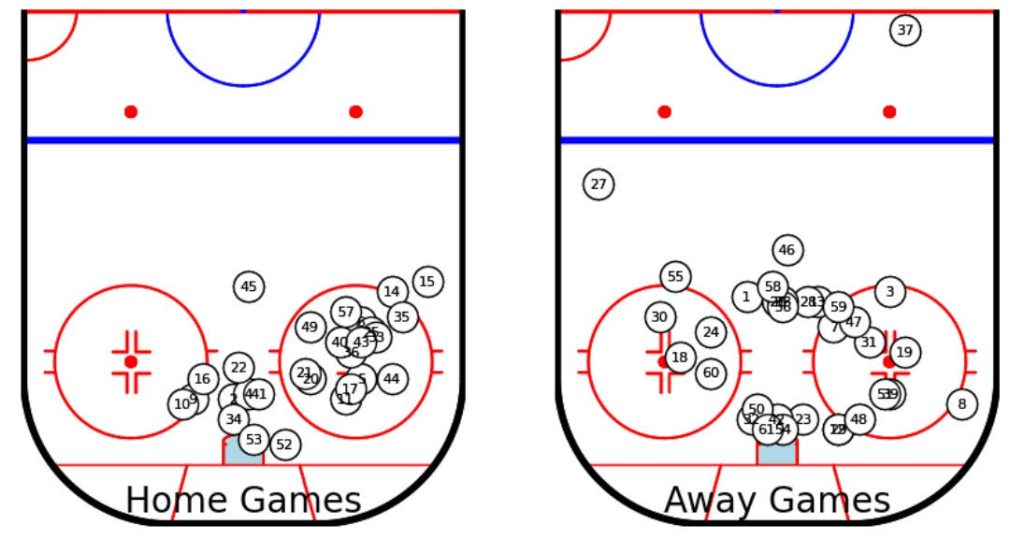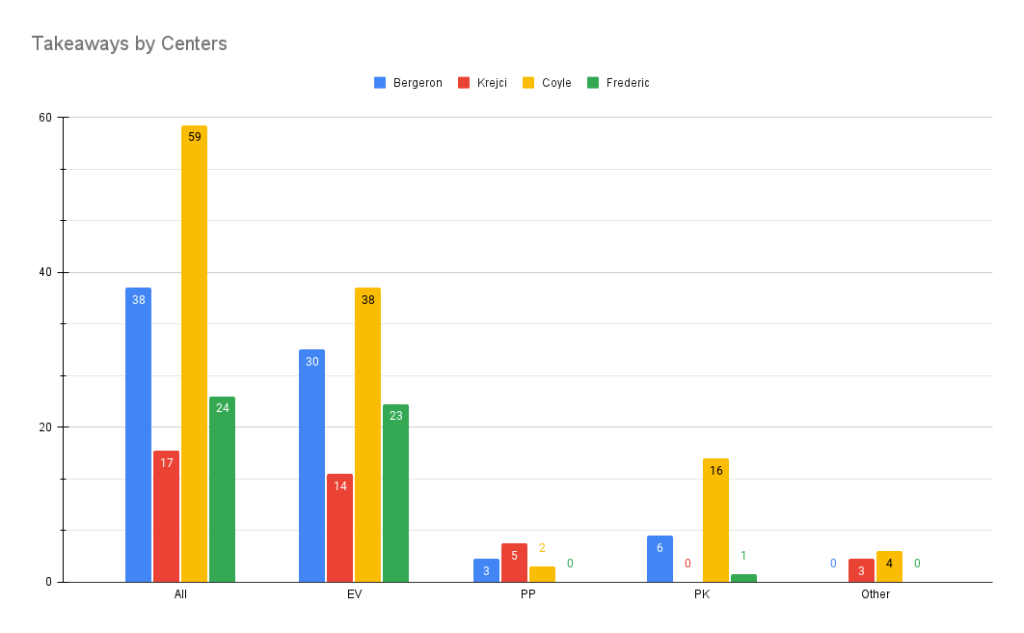
By Karoline Sears | Follow me on Mastodon: @spelled_with_a_k and Substack
Welcome to the Bruins Stats Corner! Your home for weekly Boston Bruins hockey analytics coverage. If you find yourself glazing over hockey data and statistical phrases, I’m here to help. I love to uncover interesting and different patterns and trends within data.
There are two kinds of people in the world: those who get excited by the word “data” and those who groan. In this day and age, data, stats, and analytics are almost a guarantee in any conversation around hockey. Data has become ubiquitous; hockey teams now employ data analysts to improve player performance, and the media references words and phrases that sound completely foreign to those out of the loop (did somebody say “Corsi”?). Let me show you two observations I made during the 2022-2023 season.
David Pastrňák’s Office
Did you know that David Pastrňák’s “office” is really just a home ice phenomenon? It’s true! A breakdown of his goals during his historic 61-goal season shows his preference for goal-scoring in the right corner of the face-off circle occurred primarily at home, while his away goals were scored closer to the slot area. In a future post, I will share some more insights that I gained from looking at his goal-scoring pattern.

Shoot the Puck, Charlie
Let’s take a look at Charlie Coyle; the eye test says he is incredibly talented at puck possession, but the man doesn’t shoot when he has that puck. Does the data back that up? You bet it does. Among his fellow centers (i.e., Bergeron, Krejci, and Frederic) during the 2022-2023 regular season, Coyle led in takeaways (59 – all situations) but was fourth in Corsi For Percentage (CF%) in all situations at (44%).
It’s important to note that the count of takeaways on the power play vs. penalty kill will be skewed because of a player’s role within special teams. However, in the even strength category, despite being a third-line center, Coyle nabbed those pucks away more often than his peers.

One of the best modern-day metrics for successful possession is the Corsi. Corsi is a measure of all shot attempts, blocked and unblocked, not in a shootout situation. Typically, this is measured at 5-on-5, but you will often see it calculated at other strengths, too. A CF% is the measure of a team’s shot attempts while a particular player is on the ice.
For example, Coyle’s CF% is calculated as the percent of Boston’s total shot attempts when he is out on the ice. It’s a relative figure comparing that player’s impact on the team to the opposition. An average CF% is between 45%-55%. As you can see in the bar graph below, Coyle isn’t really converting all of those takeaway situations into shot attempts.

Remember, the numbers for all players will be skewed for the power play and penalty kill situations based on the players’ role on special teams and the situation overall. For example, all four centers’ CF% are fairly low on the penalty kill, as is expected, since they are at a disadvantage.
The Relative Corsi For Percentage (Rel CF%) is the relative comparison of shot attempts among teammates. This is how you measure a player’s impact compared to all other players on his team. It should come as no surprise that Coyle ranks identically in all five situation types in Rel CF% as he did in CF%.
If you’ve learned something new about the Bruins and you want to learn more, join me, BNG’s resident data nerd, as we explore new and interesting stats about our favorite team. It’s my goal to keep the data simple in order to keep you informed. By adding some data food for thought to your diet, you might discover you are a data nerd just like me.


Leave a Reply